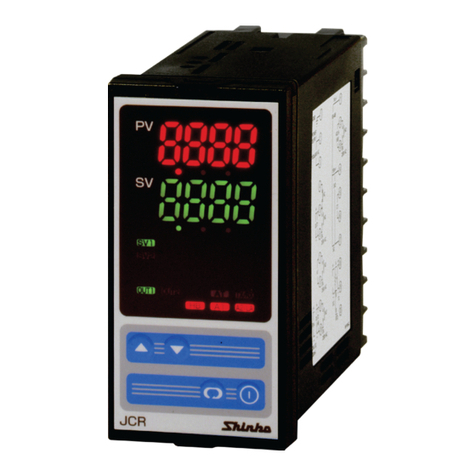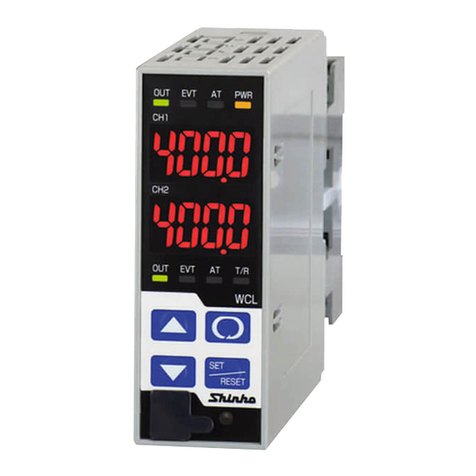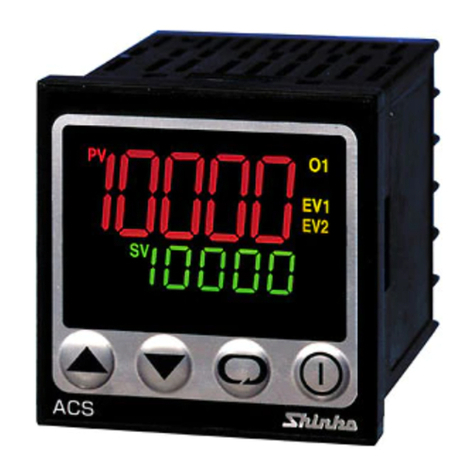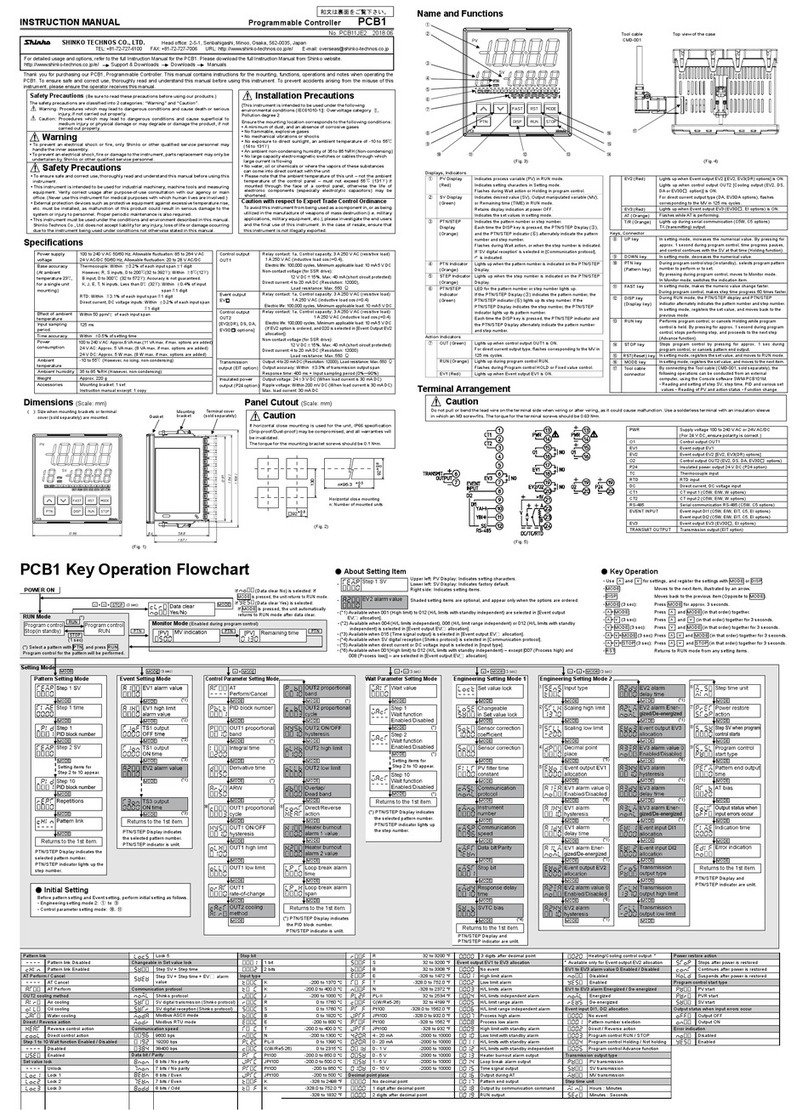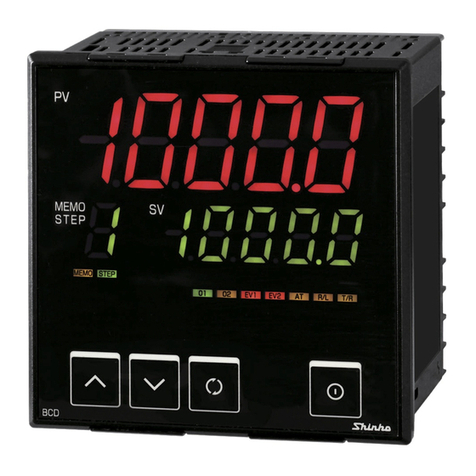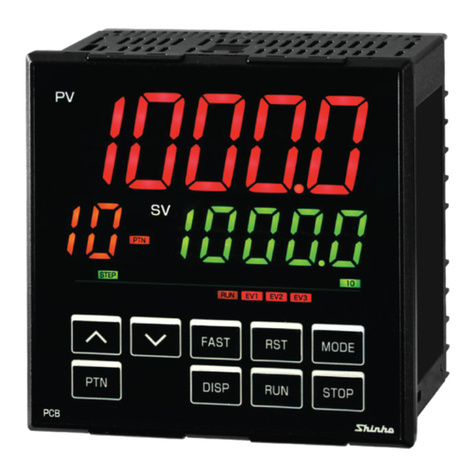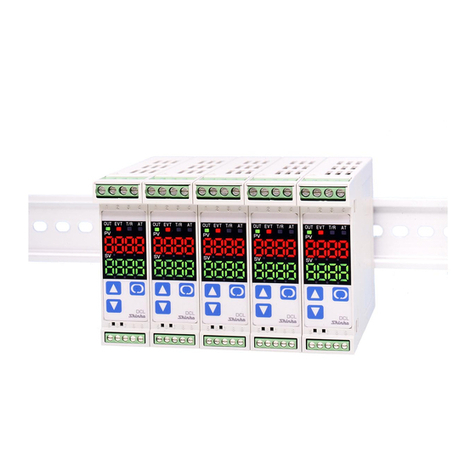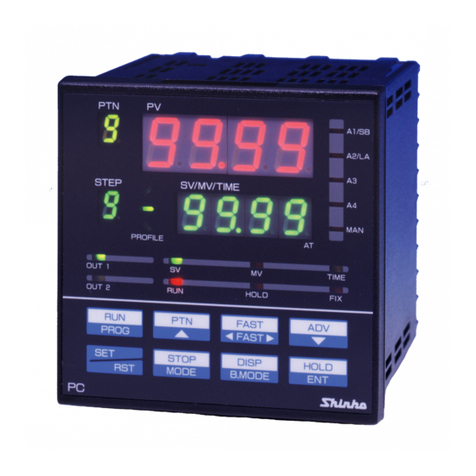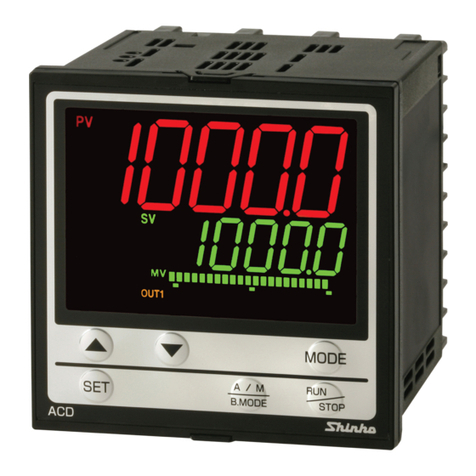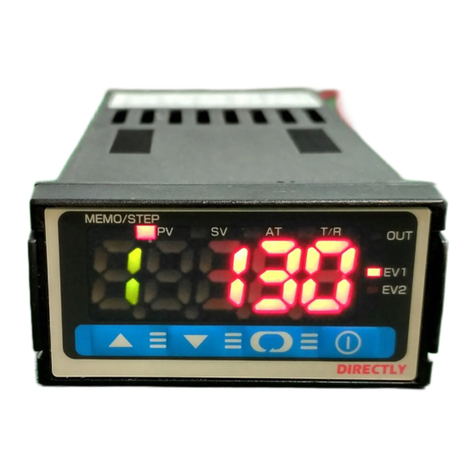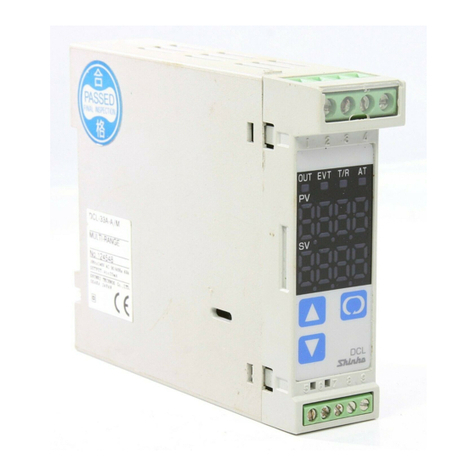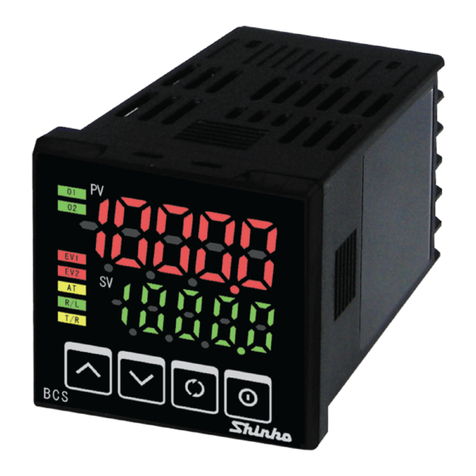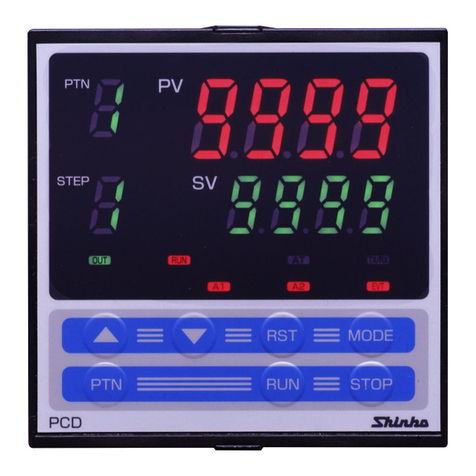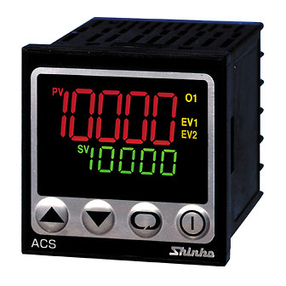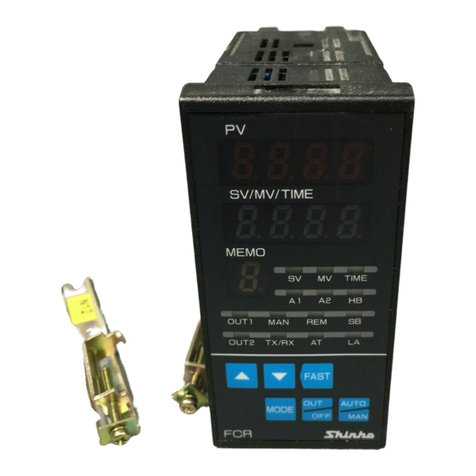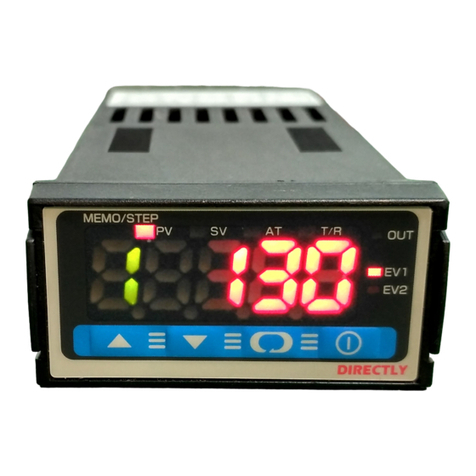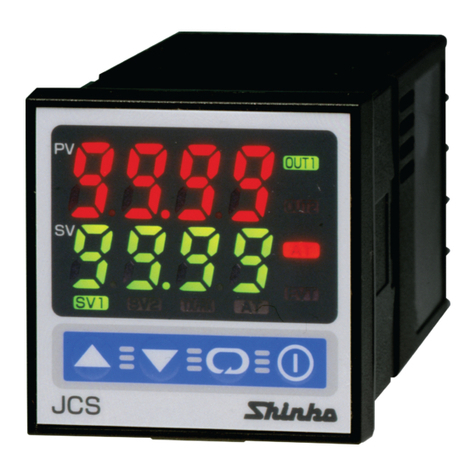
7
Scaling low limit
PV SV Value • Set the value with the or key.
Scaling high limit
PV SV Value • Set the value with the or key.
Decimal point place
PV SV Selection • Make a selection with the or key.
• Available for DC current, voltage input
PV filter time
constant
PV SV Value • Set the value with the or key.
OUT (Limit control
output) hysteresis
PV SV Value • Set the value with the or key.
[Setup mode]
Auto/Manual start
PV SVSelection • Make a selection with the or key.
• Default:
EXCEEDED indicator
lighting duration time unit
PV SVSelection
• Make a selection with the or key.
• Default:
Reverts to the PV/SV display.
A1 type
PV SV Selection • Make a selection with the or key.
• Default:
A1 hysteresis
PV SV Value
• Set the value with the or key.
• Not available if is selected during A1
type selection
A2 type
PV SV Selection • Make a selection with the or key.
• Available whenA2 output is added.
A1 action
Energized/Deenergized
PV SV Selection
• Make a selection with the or key.
• Not available if is selected during A1
type selection
A2 action
Energized/Deenergized
PV SV Selection
• Make a selection with the or key.
• Not available if is selected during A2
type selection
A1 action
delayed timer
PV SV Value
• Set the value with the or key.
• Not available if is selected
duringA1 type selection
High/Low limit control
PV SV Selection • Make a selection with the or key.
• Default:
A2 action
delayed timer
PV SV Value
• Set the value with the or key.
• Not available if is selected
duringA2 type selection
A2 hysteresis
PV SV Value
• Set the value with the or key.
• Not available if is selected during A2
type selection
(2)
Input type (character indication) and range
: K -200 to 1370
: -199.9 to 400.0
: J -200 to 1000
: R 0 to 1760
: S 0 to 1760
: B 0 to 1820
: E -200 to 800
: T -199.9 to 400.0
: N -200 to 1300
: PL- 0 to 1390
: C(W/Re5-26) 0 to 2315
: K -320 to 2500
: -199.9 to 750.0
: J -320 to 1800
: R 0 to 3200
: S 0 to 3200
: B 0 to 3300
: E -320 to 1500
: T -199.9 to 750.0
: N -320 to 2300
: PL- 0 to 2500
: C(W/Re5-26) 0 to 4200
: Pt100 -199.9 to 850.0
: JPt100 -199.9 to 500.0
: Pt100 -200 to 850
: JPt100 -200 to 500
: Pt100 -199.9 to 999.9
: JPt100 -199.9 to 900.0
: Pt100 -300 to 1500
: JPt100 -300 to 900
: 4 to 20mADC -1999 to 9999
: 0 to 20mADC -1999 to 9999
: 0 to 1V DC -1999 to 9999
: 0 to 5V DC -1999 to 9999
: 1 to 5V DC -1999 to 9999
: 1 to 10V DC -1999 to 9999
Alarm type
(High limit alarm) : The alarm action is deviation setting from the SV. The alarm is
activated if the PV (process variable) reaches the high limit set value.
(Low limit alarm) : The alarm action is deviation setting from the SV.The alarm is
activated if the PV (process variable) goes under the low limit set value.
(High/Low limits alarm): Combines High limit and Low limit alarm actions. When PV
(process variable) reaches high limit set value or goes under
the low limit set value, the alarm is activated.
(High/Low limit range alarm): When PV(process variable) is between the high limit
set value and low limit set value, the alarm is activated.
If PV exceeds the high limit set value or goes under the low limit
set value, the alarm output is turned off.
(Processhighalarm) Within the scale range of the controller, alarm action points
(Processlowalarm) can be set at random and if the PV (process variable) reaches
the randomly set action point, the alarm is activated.
(High limit alarm with standby) When the power to the controller is turned on, even if
(Lowlimitalarmwithstandby) the PV (process variable) enters the alarm action range,
(High/Lowlimits withstandby) the alarm is not activated. Even if the PV enters the
alarm action range due to SV change during running,
the alarm is not activated, either. If the controller is
allowed to keep running, once the input exceeds the
alarm action point, the standby function will be released.
Input type
PV SVSelection • Make a selection with the or key.
• Default:
Press the for 3sec while holdin
down the and .
(3)
(5)
(4)
(1)

